AGED OVER-50, I’m old enough to remember the era when air travel – including short-haul travel between Spain and the UK – was an enjoyable experience. With free meals served by helpful cabin crew (including alcohol), a complementary 20kg hold bag, seat-back TV screens showing the plane’s position en route, and upholstered seats, it was a far cry from today’s low cost carriers (LCCs) thinking “let’s fleece the grockles for every penny.”
Now, flying is an unpleasant start to most holidays, akin to being herded like cattle. It’s a literal race to the bottom – and the boarding gate – especially if you’re flying with Ryanair. Plus, the behaviour of passengers has descended to an all-time low, just like the actual aircraft.
Harking back to better days
I personally started flying in the mid-1980s, accompanying my teenage friend and her mother to a timeshare on The Algarve, Portugal, near Faro Airport. With the only problem being my ears popping on descent into Faro, it was a fun time. I recall how much the experience has changed over the years…
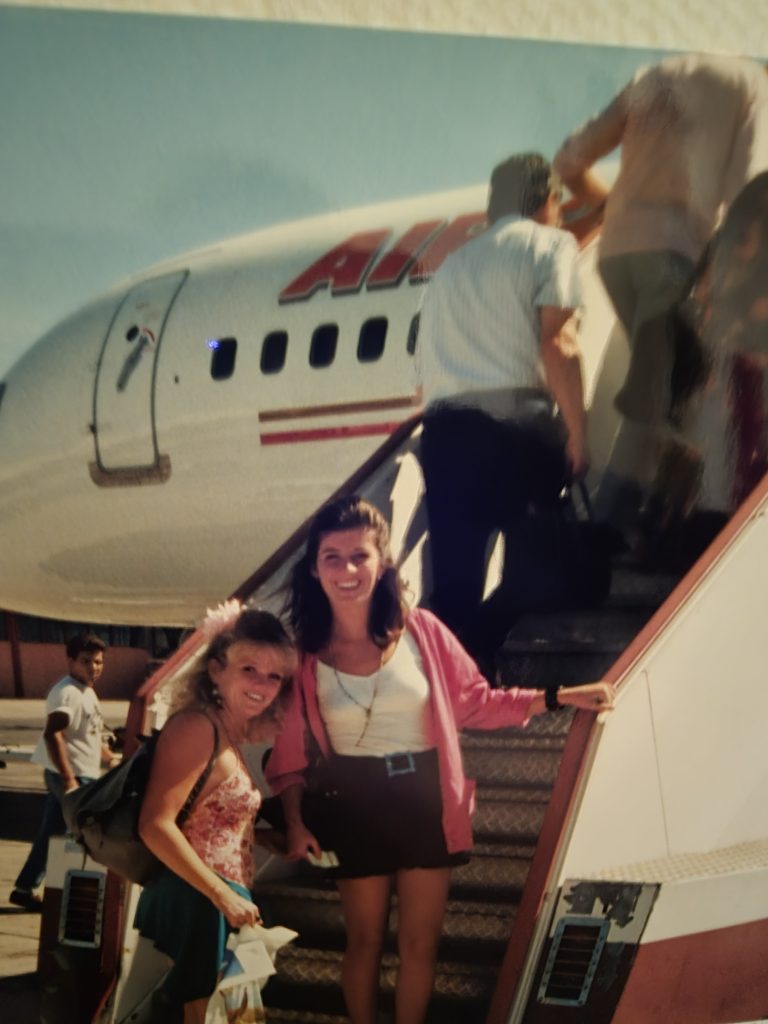
By the mid-2000s, the newish LCCs had started charging for “extras” – otherwise known as “ancilliary fees”, or “non-ticket revenue”. Now forming 15% of airline revenue, these extras soon evolved to include erything from checked bags, to cabin luggage, seat selection, priority boarding, fast-track security, and in-flight food and drinks.
At least Ryanair rejected its 2009 plan (surely a publicity stunt) of charging passengers to use the toilet.
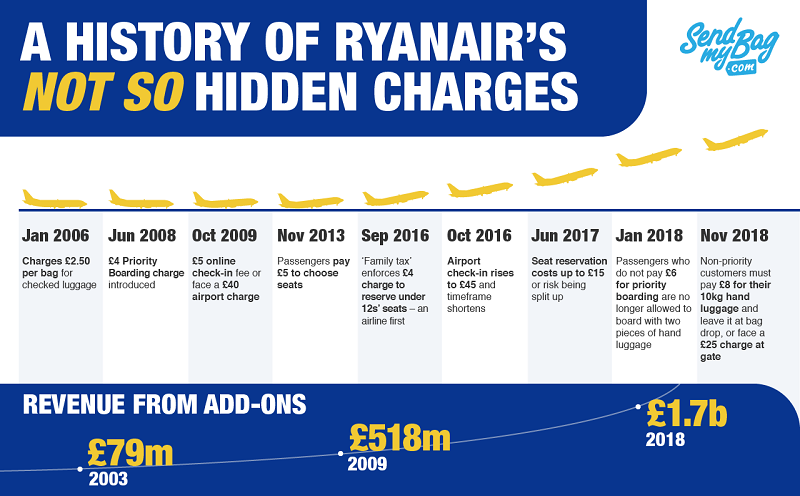
Interior design and “poo planes”
Back in the day, plane interiors used to be relatively plush, featuring aisle carpet and some ‘home comforts’. OK, so you weren’t allowed to smoke in the toilet or join the Mile High Club. Although it was definitely less illegal (and easier) to be drunk in-flight!
Over time, however, with passengers letting their own standards slip, the toileting issue grew to be one big mess for some unfortunate cabin crew!
Judging by news stories dating back two decades, the move towards wipe-clean plastic seats on modern aircraft are related to what can emerge from actual passengers (re the famous Delta “poo plane” and people changing babies’ nappies on tray tables).
The plastic interior also enables a speedy turn-around at the terminal, before the plane departs on its next leg. Crew can simply give surfaces a quick spray-down, without being foiled by bacteria (or worse) lurking in upholstery, or problems on the floor carpet.
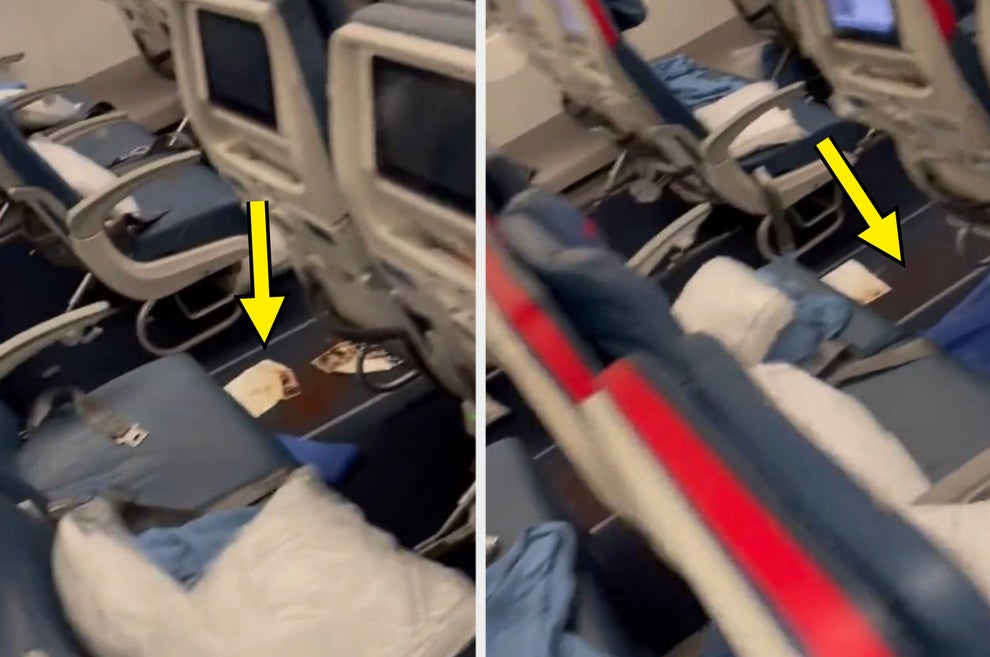
Baggage woes
Back in the 80s to early 2000s, you could bring your 20kg suitcase, full of cheap plonk, and check it straight into the hold, free of charge. No need for a pesky cabin bag – your handbag would suffice. The baggage process was relatively stress-free, unless the carrier lost your hold luggage (as happened to my family with Jet2, removing our clothes for a holiday in Scotland). This is an element of flying that has changed beyond recognition over the years.
Notably, newer aircraft hold considerably more passengers than their predecessors. For example, the Boeing Max 10, on order by Ryanair, will carry 228 passengers, compared to 187 on older aircraft in the fleet. The additional seating on newer planes explains why some rows have no window, or adjoin a window frame instead of a window panel. This also means more baggage in the cabin.
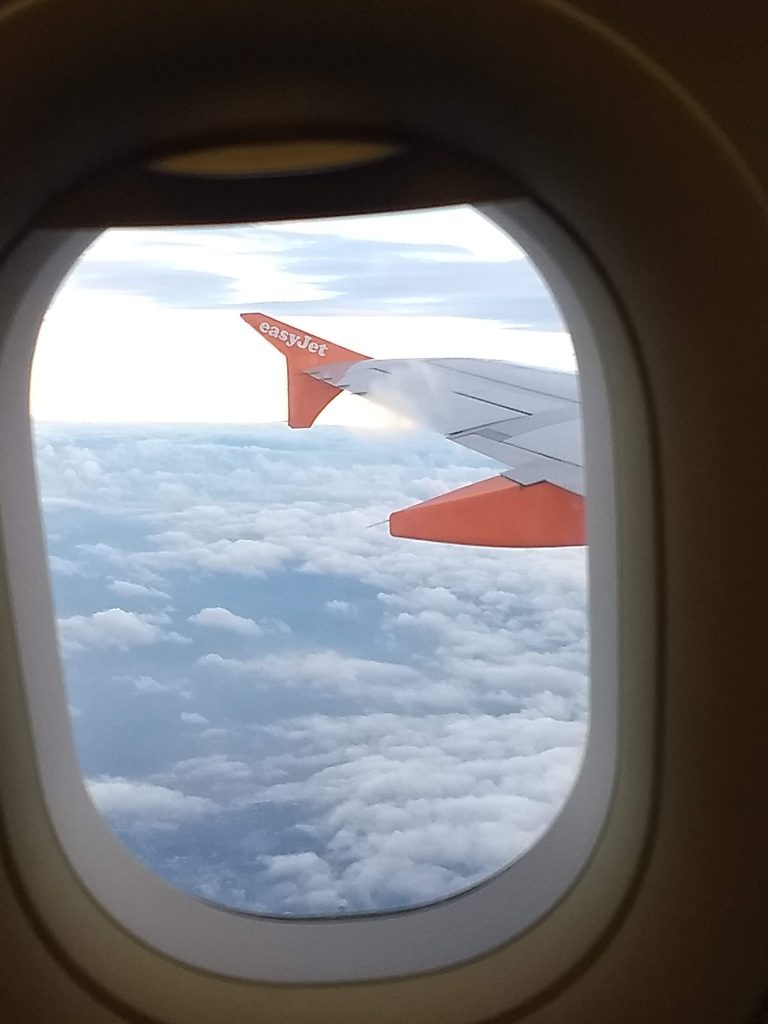
Altough the EU is trying to regularise cabin luggage, the LCCs have their own ideas. They continue to apply various cabin bag sizes, leading to confusion amongst passengers – and infamous fines at the gate for non-compliant baggage.
While the size of under-seat bags (e.g. holdall and laptop cases) differs between LCCs, so do the dimensions of wheely cabin cases. Ryanair specifies 55 x 40 x 20cm and Easyjet 56 x 45 x 25 cm. At least Ryanair has become less obsessed with its dreaded bag-measuring device at the gate.
Depersonalised service
In 2004, my friend and I were upgraded to First Class by BA at Granada Airport (GRX) for arriving late and missing our flight. I thought there was no need to hurry (or, maybe, I was “otherwise engaged” before departure). To our delight, on the later allocated flight, arranged by friendly check-in staff, we were served a tasty hot meal with miniature bottles of cava. Nowadays, this would never happen. Missed your flight – you’ve lost your money! No second chance! Or nobody to consult re the problems you are encountering.
An error in a passenger name can be a problem to correct, with a general depersonalisation in service. I know someone who booked a second, identical flight with Vueling – at the same cost as the first attempt – rather than perform a name change over the phone. And all because of a careles typo in their son’s name. Computer says “no”.
A race to the gate
Even when you arrive at the terminal building, with the correct documentation, calm, and with time to spare, there are trials and tribulations before reaching your seat.
For starters, it’s increasingly obvious that passengers deliberately arrive early and stampede to the boarding gate area (invariably B and C in Málaga Airport, for the Brexit Brits). This is with the idea of reaching the front of the Priority Boarding queue. It’s surprising that duty free stores earn sufficient income, with potential customers racing straight through the departure hall.
This trend is caused by budget carriers making the 20kg (or 22kg with Jet2) hold bags so unattractive that most passengers rely on carry-on luggage. Cabin bags mean that you can perform online check-in and scan your boarding pass at security, thereby avoiding a queue at the check-in desk. In turn, more bags fill the cabin, causing competition for overhead lockers. It’s a stressful scenario that escalates annually. Will the cabin bag bubble eventualy burst?
For now: late to the gate means back of the queue. Your bag will be 10 rows behind you, with all your valuables inside.
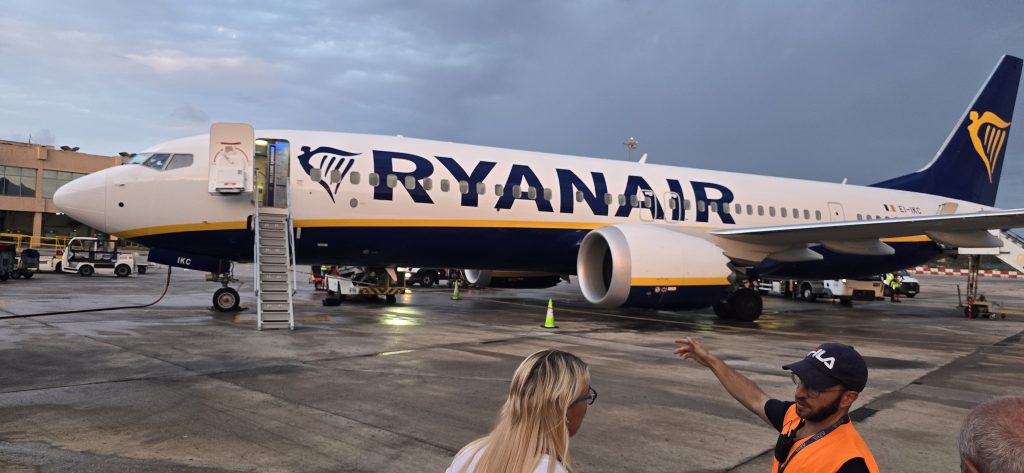
Competitive passengers
The cabin bag conundrum means there are two types of passenger on Ryanair flights. Firstly, the ADHD types (like yours truly), who hate queuing and want easy access to their bags – in a locker directly overhead. Secondly, the rucksack-carrying, non-priority boarders who don’t care if it takes 30mins longer to embark, disembark, and stand in line at passport control. Chill out, man!
These days, people jostle to board first and can become easily frustrated. It is sooooooo competitive! Clearly missing the golden era of first class travel, an older lady – dressed head-to-toe in monogrammed designer gear – made her husband stand at the check-in desk at Málaga’s Gate B for an hour, to gain pole position in the boarding queue. She then looked furious when their boarding passes failed to scan and other passengers beat ’em to it. Aw, diddums!
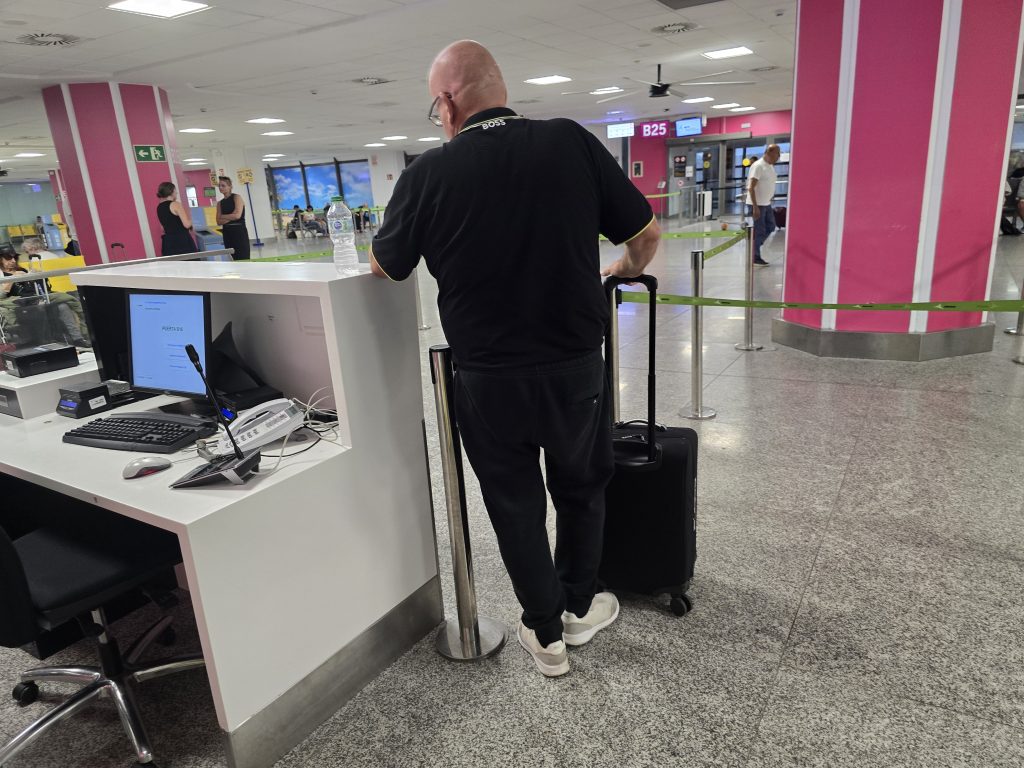
Furthermore, Ryanair avoids paying the airport authorities (such as AENA) for jetbridges (those tunnels that attach to the front of the plane, so you simply walk on), and makes passengers drag their cabin bags up and down stairs in the heat at Málaga. The carrier even had special folding stairs installed by Boeing.
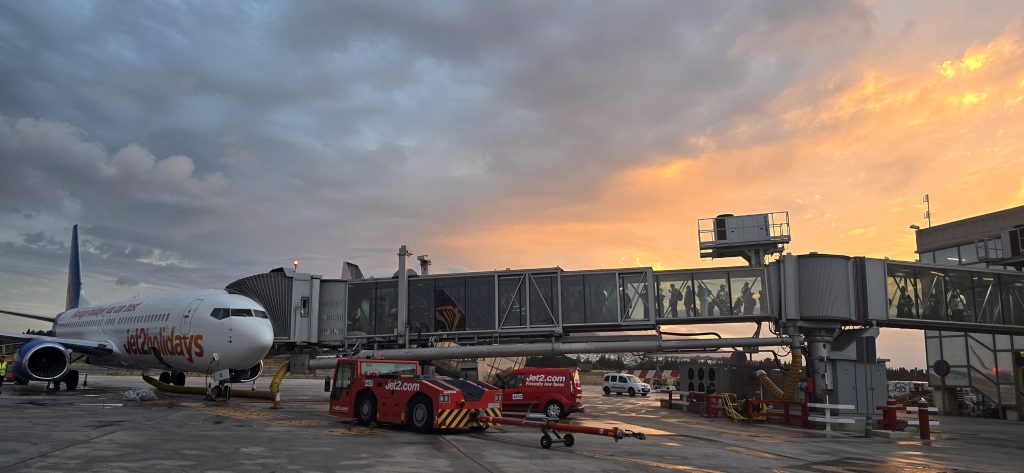
Seating scenarios
If the boarding process isn’t stressful enough, your seat is not a comfortable sanctuary either. With the new Boeing aircraft, the seats have shrunk. The typical dimensions for Ryanair cabin seats are seat pitch (legroom) of 30″, and seat width of 17″ – unless you pay for an extra legroom seat to avoid feeling cramped.
If you don’t pay for a seat, you’ll be randomly allocated one by the carrier, and plonked amongst equally random passengers. “I was sandwiched in a middle seat between a married couple during my last flight,” a lady said at Málaga Airport Gate B. I now pick seats at the front.” Always a good idea, if you have the budget.
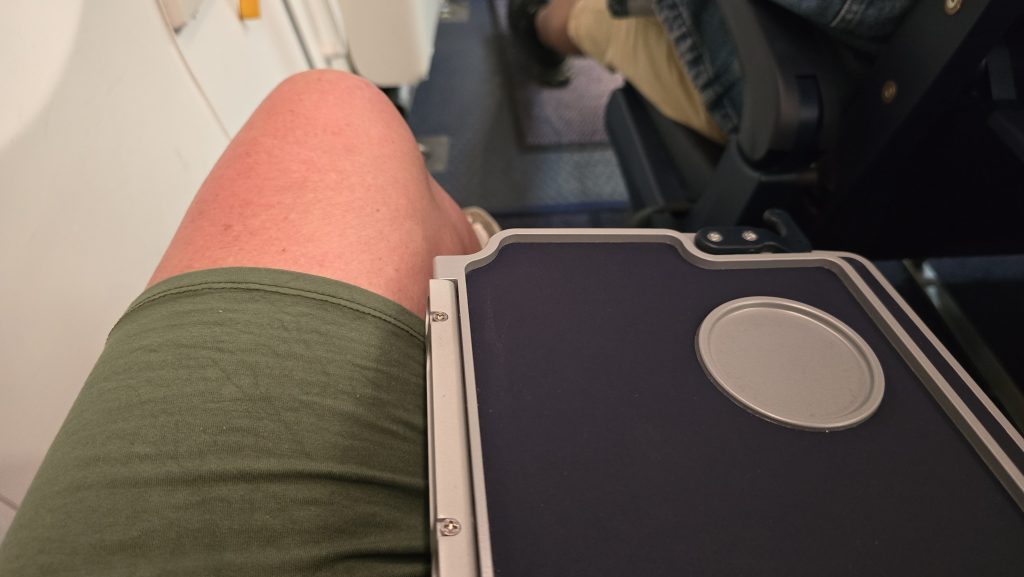
As for in-flight “entertainment”, this either involves (a) watching the human zoo or (b) downloading content to your own gadgets. While, in the past, it was easy to amuse the kids with a movie on your 15-17″ laptop – or do some work en route – the machine would now fall off the small and flimsy tray table. Note that you can insure gadgets as an optional extra on Ryanair. Why is that, I wonder.
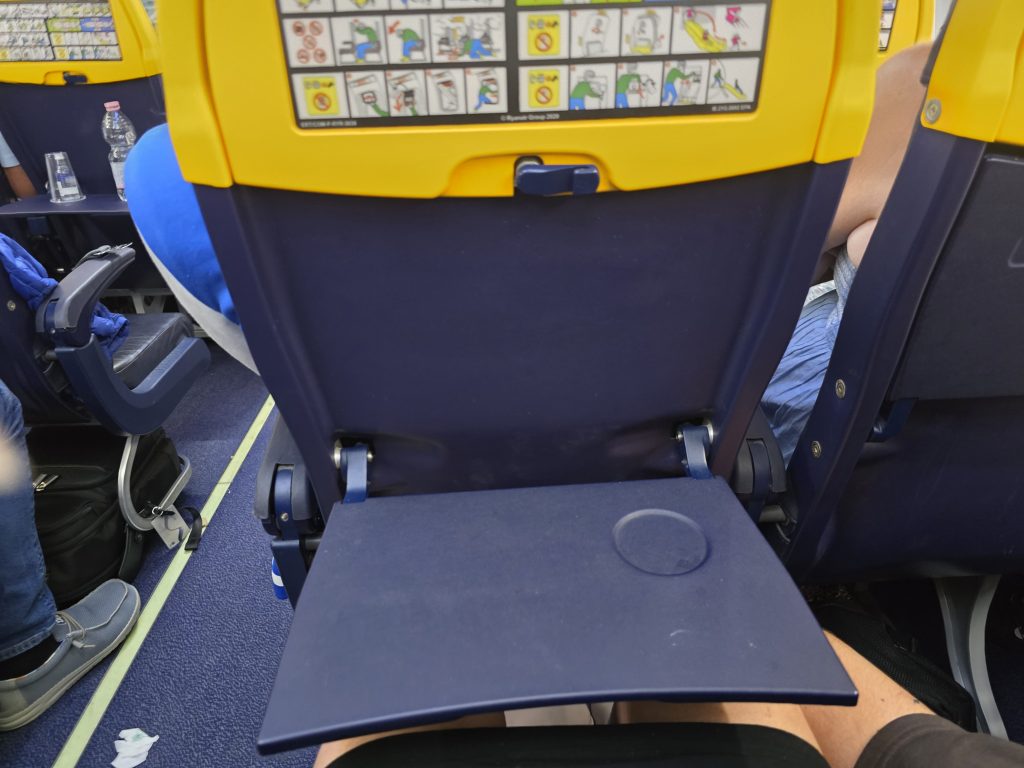
In-flight food that assaults the palate
In the first two decades of the 2000s, I recollect buying decent in-flight meals for a reasonable charge – especially on Monarch Airlines from London Gatwick to Granada Airport, GRX (the carrier went bust in 2017). Unfortunately, the food served by LCCs in has become increasingly expensive and revolting. In fact, it is downright unpalatable at times.
Present day “trolley service” on Ryanair involves insubstantial microwave meals charged at 7.50e and miniscule bottles of wine for over 6e. Last year, my family forgot our sandwiches and spent 32e on miniscule snacks that fed no-one. Once, my son ate a tepid rice dish and was ill afterwards. In reality, it was probably a cabin-borne virus, but half-heated rice, of its own accord, is a genuine health hazard. And never drink the “tap water” from the plane’s tanks.
Where is it all heading?
In my personal opinion, many passengers would like to see cabin bag sizes standardised. The EU is planning such endeavours, when it’s not busy reducing the size of liquids in cabin bags again, despite new scanners arriving at some airports that can identify problems with liquids exceeding 100ml.
Standardised luggage could avoid potentially having to break the wheels off your cabin bag to comply at the gate. Smashing the wheels is definitely cheaper than paying 70e to check the offending case into the hold. Paranoia remains about your bag being 1-2cm oversize, even if it is sold as “Ryanair compliant”.
As for seat selection – primarily on Ryanair – the competitive behaviour has potentially become so ingrained that passengers won’t change. That is unless Ryanair addresses the situation of too many bags in the cabin. This seems unlikely, bearing in mind the revenue it raises.
With in-flight food and drink tasting like 1e ready-meals from the convenience store, it is best to BYO – bring your own. A sandwich in Málaga Airport, and on the plane, wil cost the same as Michael O’Leary’s famous 10e flights of yesteryear.
In reality, what is going to change? Short-hail air travel has become something to endure, rather than enjoy. This is especially true if the only carrier serving your destination is Ryanair. Members of Gen X are lucky to remember a more positive era of short-haul travel.
Happy flying – if you can achieve it!
